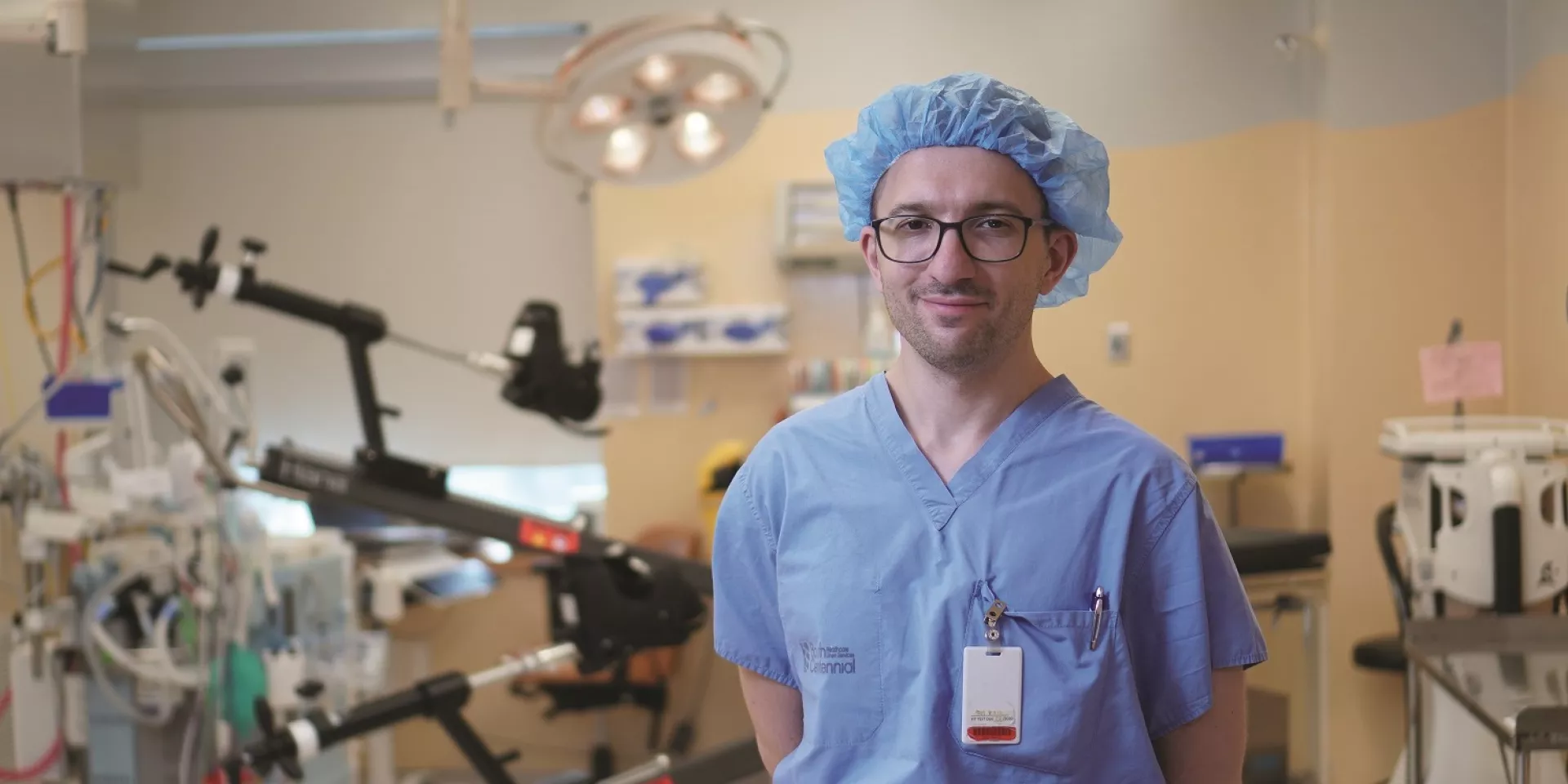Myles Gordon has been busy these days tending to his 3/4-acre garden. It’s a lifelong hobby in which the 76-year old finds daily joy. It’s also an activity he thought had been causing his persistent back pain. But after a visit to his family doctor, he discovered the pain was actually originating from his hip—and it needed to be replaced.
“I had to do something about it because it was affecting my day-to-day activities,” Myles says. “I enjoy gardening, and I just couldn’t do much of that anymore without pain.”
By coincidence, his doctor’s office was also where he learned about the specialized anterior approach to hip replacement that surgeons at Michael Garron Hospital now offer, thanks to a revolutionary surgical table, funded in large part by the James H. Cummings Foundation.
“I was sitting in my doctor’s office talking about what I thought was my back pain, when a fax came through describing the new type of hip replacement that Dr. Dmitry Tsvetkov was doing at Michael Garron Hospital,” remembers Myles. “Within a month, I was booked for the surgery.”
Hip replacement surgery is typically an invasive procedure with a long recovery time.
That’s because hip replacement has traditionally been performed with the patient sideways, requiring the physician to make incisions into the large muscles of the pelvis or femur to access the hip joint. This approach resulted in more pain and a longer recovery.
The Hana® table is a specially designed operating table that enables the surgeon to position a patient facing upward.
Though the surgery is the same, the table allows surgeons to use a direct anterior approach—replacing the hip through a single incision without detaching the muscle from the pelvis or femur.
“This minimally invasive technique allows us to work between these large muscles rather than going through them,” explains Dr. Tsvetkov, “so patients experience much less pain and recover more quickly.”
Patients can usually be discharged within one or two days, and recovery is reduced from six weeks down to just one or two— an appealing prospect for people who just want to get back to their regular activities. Within hours of his surgery, Myles was up and walking and was discharged the next day to recover at home.
“I’d like to say I expected to have the health I had at age 25, but realistically I was just hoping that I would have no back pain after gardening season ended,” he says. “After a month of recovery, I was back in the gym every day doing light workouts, and I’ve gotten back to gardening.”
“This type of surgery is quickly becoming a standard of care,” explains Dr. Tsvetkov. “Having the equipment to do this procedure here at Michael Garron Hospital is very important, and without donor support we would not have been able to do this. We’re very grateful.”
These days, Myles is grateful too.
“I’m feeling good and almost pain free—and my garden looks even better than me!”
